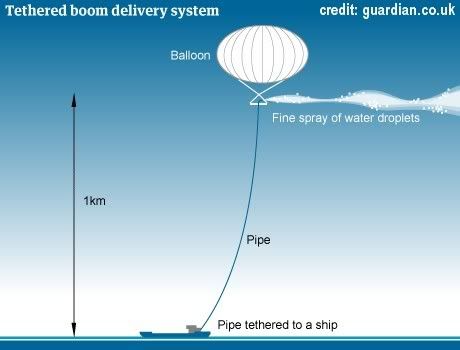The Biochar Economy offers a sustainable alternative to economic systems that fail to sufficiently take into account care for the environment and concerns for global warming.
Biochar is one of the products of pyrolysis, an oxygen-starved method of heating up biomass to (also) produce renewable energy.
The Australian Government plans to award carbon credits for the application of biochar to soil, for biochar's ability to abate greenhouse gases. As part of the Carbon Farming Initiative $AU2 million will be provided for a Biochar Capacity Building Program. This in addition to $AU1.4 million that is already being invested in the National Biochar Initiative as part of the Climate Change Research Program.
Carbon credits constitute just one way to support biochar. Ultimately, carbon credits are typically paid from profits on fossil fuel, which are scheduled to decrease over time. To develop more lasting support for biochar, alternatively policies should be considered.
The Australian Government plans to award carbon credits for the application of biochar to soil, for biochar's ability to abate greenhouse gases. As part of the Carbon Farming Initiative $AU2 million will be provided for a Biochar Capacity Building Program. This in addition to $AU1.4 million that is already being invested in the National Biochar Initiative as part of the Climate Change Research Program.
Carbon credits constitute just one way to support biochar. Ultimately, carbon credits are typically paid from profits on fossil fuel, which are scheduled to decrease over time. To develop more lasting support for biochar, alternatively policies should be considered.
The idea behind the "Biochar Economy" is to try to embed biochar production into as many processes as possible, as pictured on above image, from open source ecology.
In carbon-negative 'Biochar Economies', biochar is proposed to also act as a kind of local 'gold standard' for local currency supply. Biochar-based currency could strengthen local economies and shield them not only from the volatility of global currency fluctuations, but also from the danger of global warming causing the entire global financial system to collapse, as discussed back in 2007.
Biochar-based local currencies go well together with three types of local feebates:
- Energy fees, imposed on polluting fuel and the equipment and appliances used to burn the fuel, to fund rebates on local clean energy programs.
- Fees on polluting cement, livestock products and nitrogen fertilizers, made payable in local currency, funding rebates on locally-produced biochar and olivine added to local soils.
- Local rates that incorporate feebates, i.e. higher fees the lower the soil's carbon content, with rebates for soils with the highest carbon content.
Since pyrolysis of surplus biomass can produce renewable energy, it can benefit from local energy feebates as pictured below.
In addition, soil supplements that include biochar can benefit from feebates as pictured below.
These policies will also create local employment and investment opportunities without having to borrow money elsewhere, and will increase local standards of living and health, as well as increase the quality and value of the land.
All this can be achieved though mechanisms that work in parallel and are often complementary, e.g. pyrolysis of forest waste can stimulate forest growth, avoid termite infections and reduce the risk of wildfires; furthermore, when pyrolysis provides power that replaces the practice of burning firewood and fossil fuel to power lighting and cooking, this will also reduce the risk of lung infections.
To increase demand for the local currency, rebates on local clean energy programs and soil supplements could be paid out in local currency. Furthermore, a community can call for local rates and fees on products such as fuel, polluting cement, livestock products and nitrogen fertilizers to be paid in local currency.
Much crop is now used to grow feed for livestock ― less livestock could free up land that could be used to produce food & wood, and the associated organic waste. Furthermore, such feebates can avoid soil erosion and deforestation, and instead result in more vegetation, thus further increasing the amount of biomass available for pyrolysis.
Below are some further ways pyrolysis can be integrated in the local economy:
- Pyrolysis of biomass is an excellent way of handling organic waste, while producing useful products such as biochar, biooils and gases such as hydrogen. Biooil and hydrogen can be used to power aviation and shipping.
- Bioasphalt® is a type of asphalt made from bio-oil. According to its manufacturer, it can save energy and money, since it can be mixed and paved at lower temperatures than conventional asphalt.
- Apart from burial of biochar to enhance soil fertility, biochar can also be used to manufacture a range of products, including vehicle bodies made of carbon fiber and capacitors.
A team at Stevens Institute of Technology has designed, fabricated, and tested a prototype supercapacitor electrode made from biochar. The team demonstrated biochar's feasibility as an alternative to activated carbon for supercapacitor electrodes. Currently, supercapacitors use activated carbon. The team estimates that biochar costs almost half as much as activated carbon, apart from being more sustainable.
Supercapacitors can be used to power electric buses. Ultracapacitor buses by Sinautecus have been operational in the Greater Shanghai area since August 2006, as mentioned under this post on electric bus systems.




 The ocean conveyor belt transports water--and heat--around the globe, as shown on the image left, from a
The ocean conveyor belt transports water--and heat--around the globe, as shown on the image left, from a 


